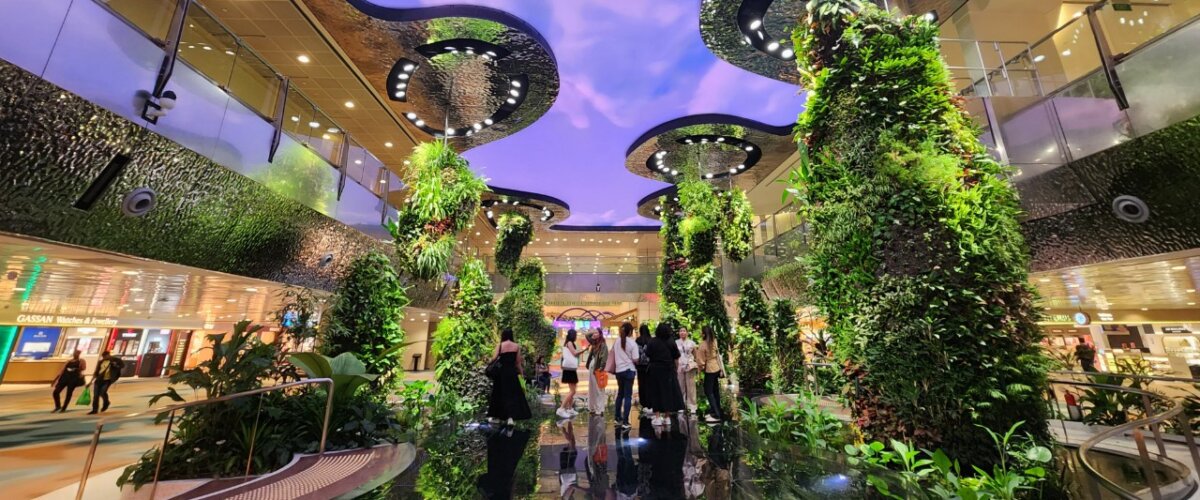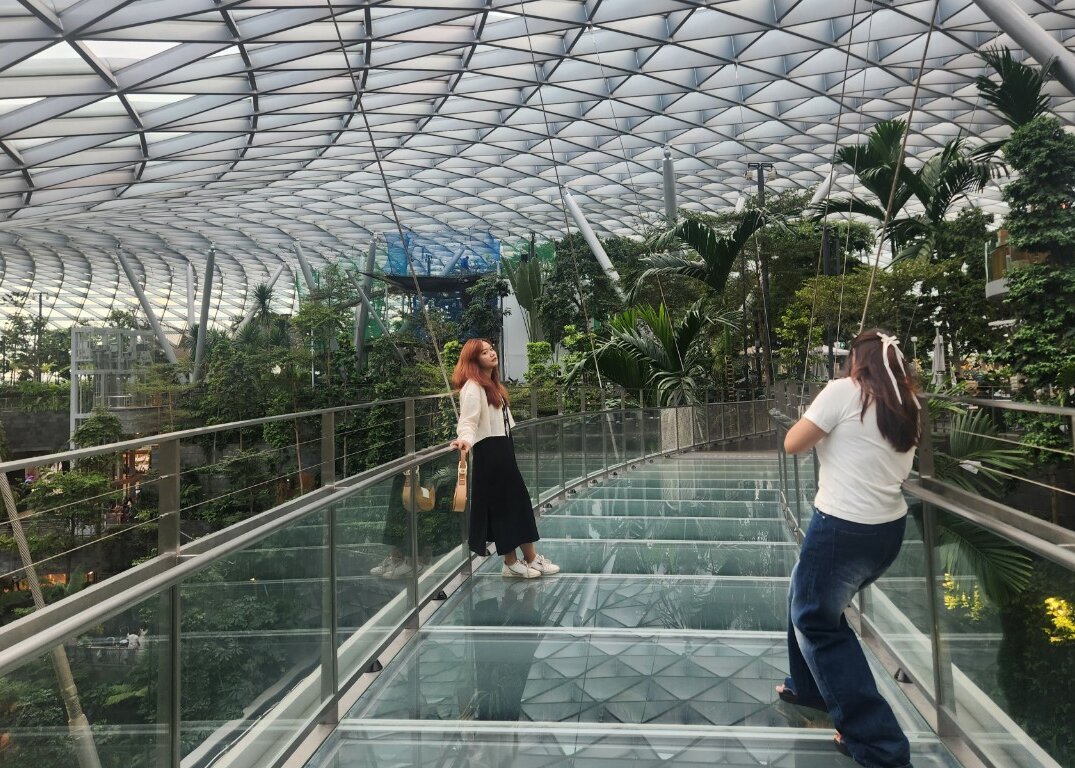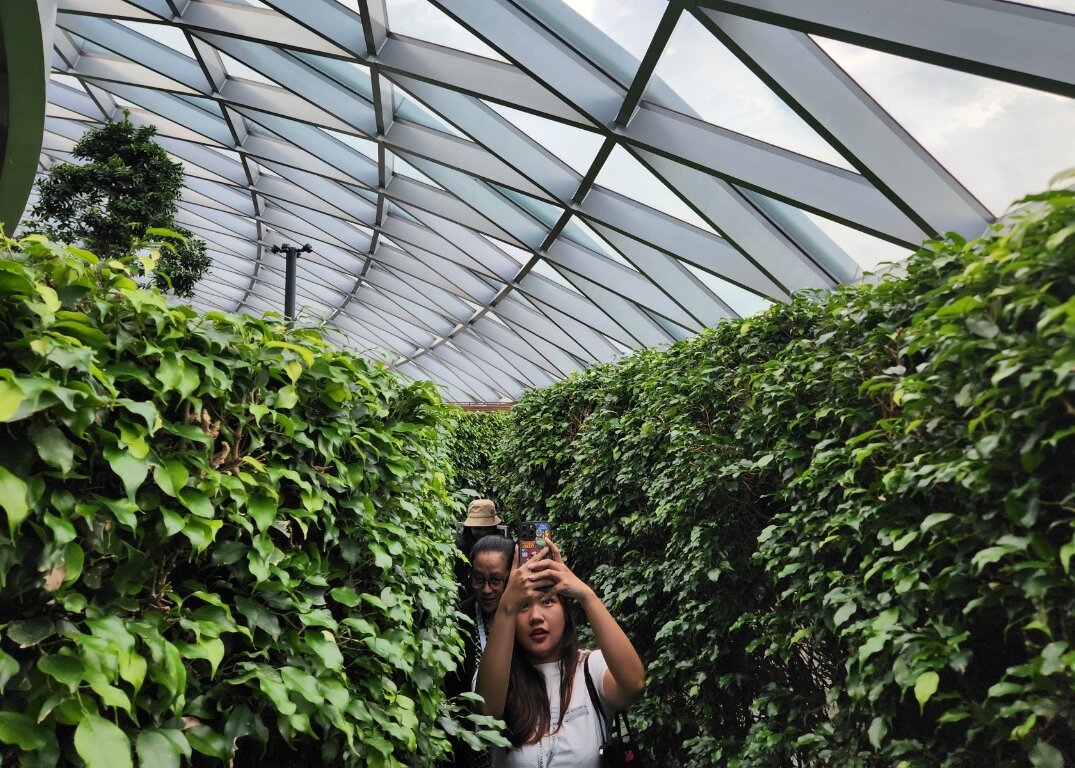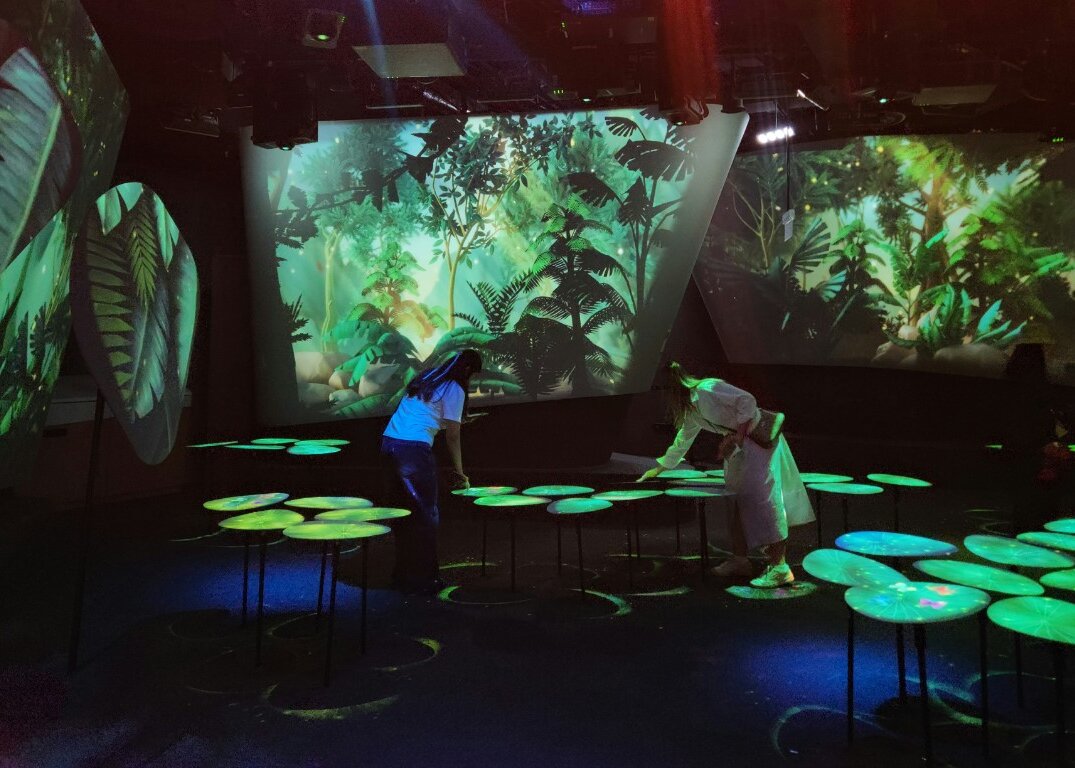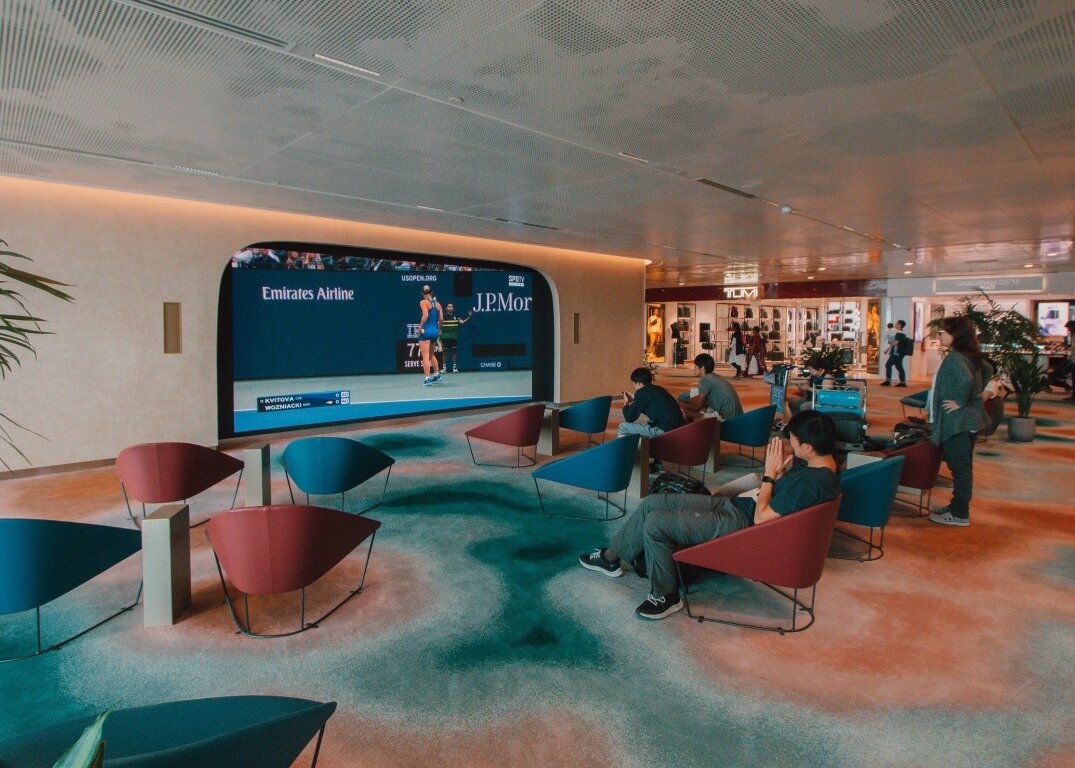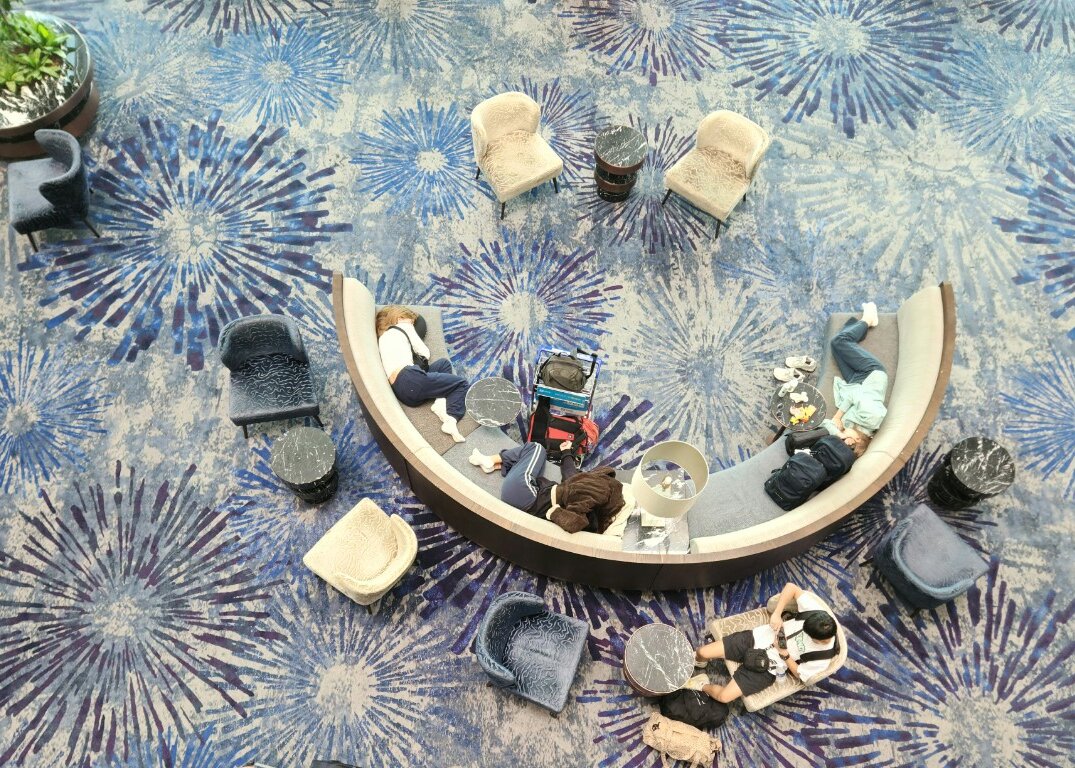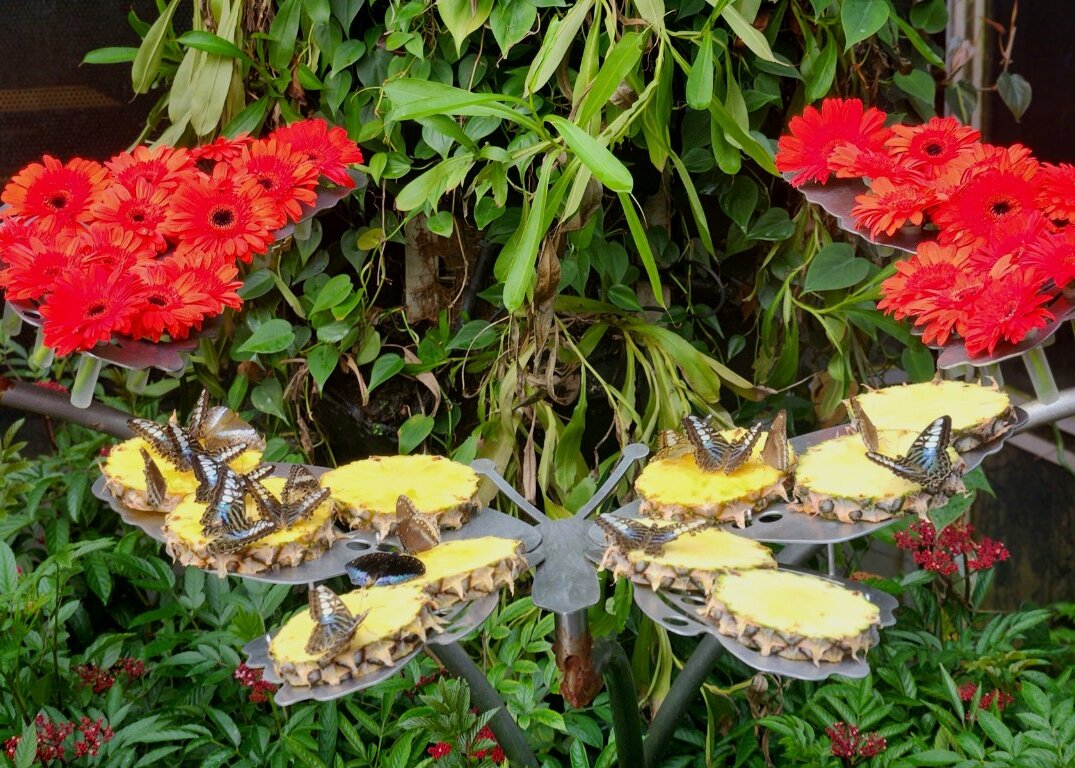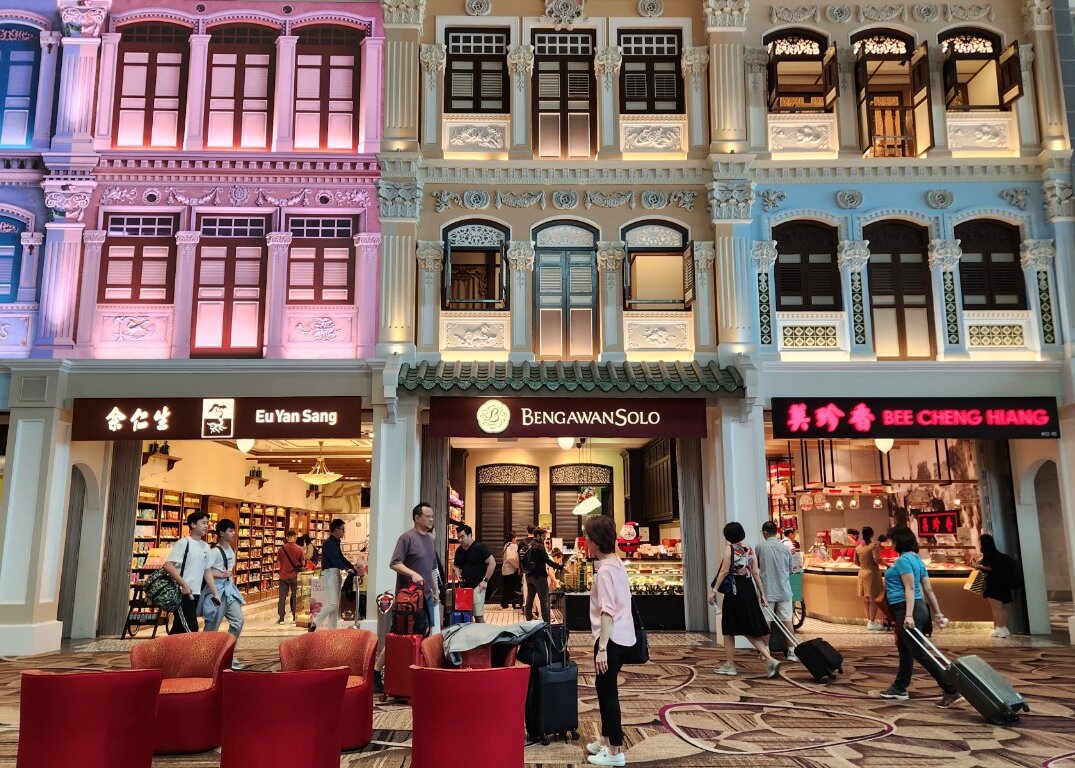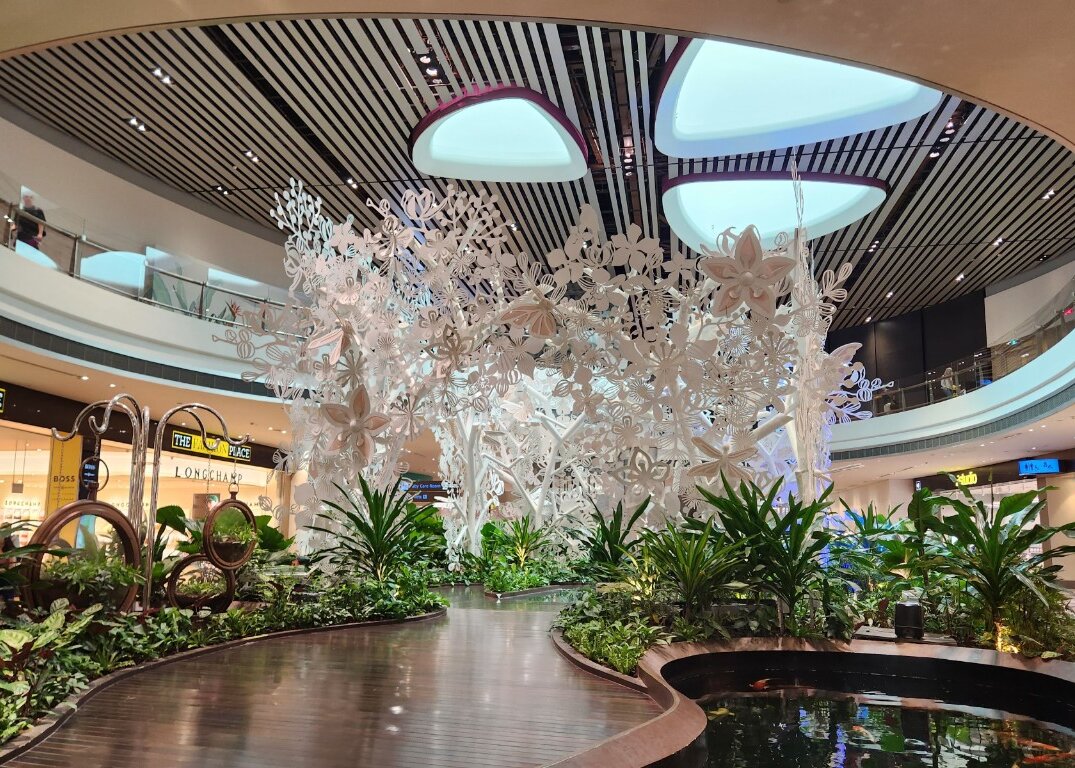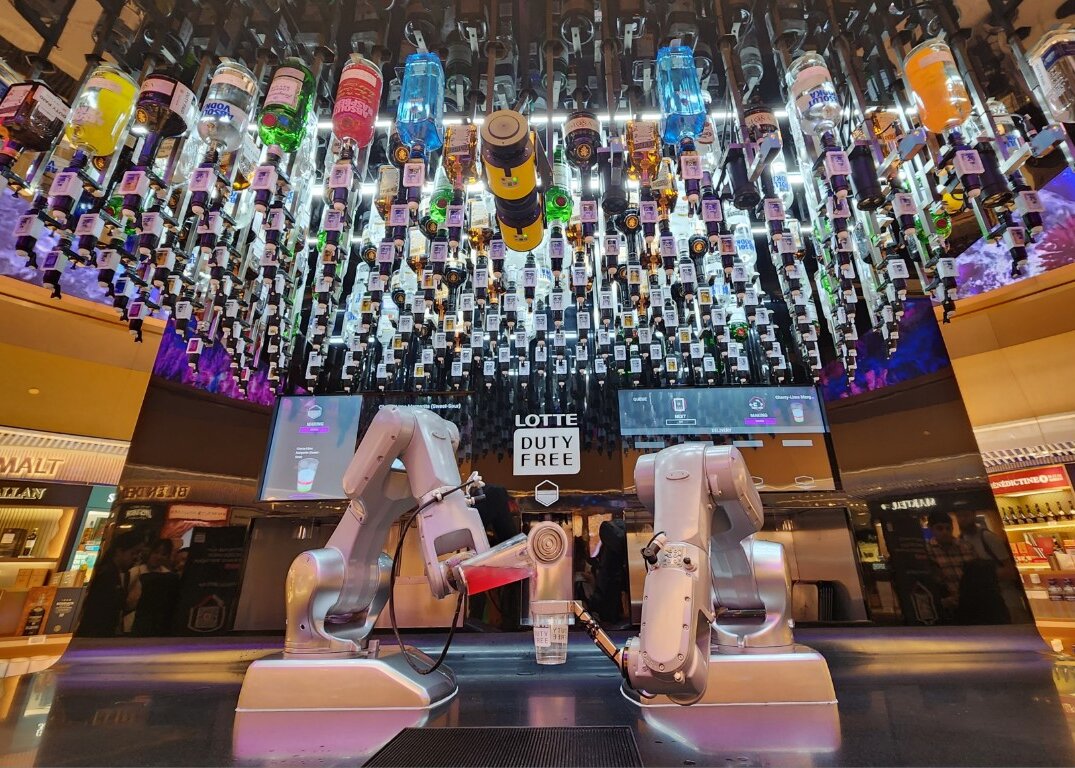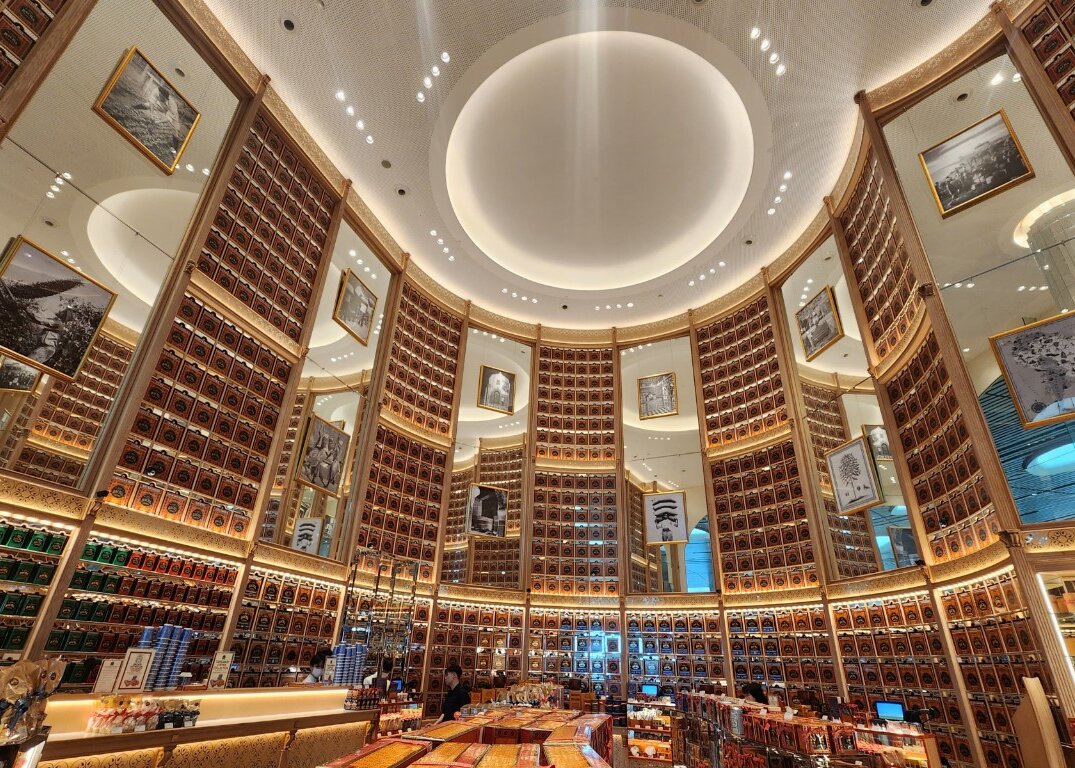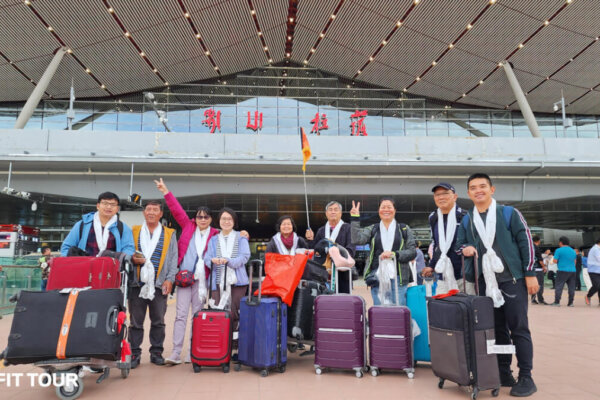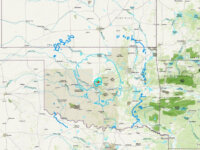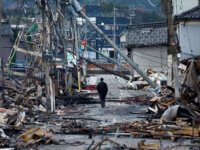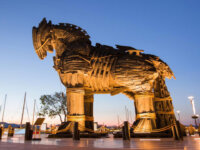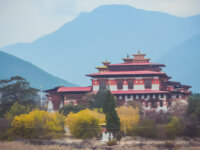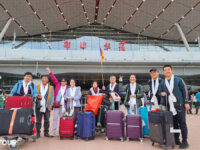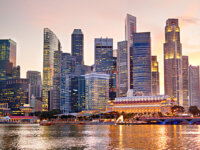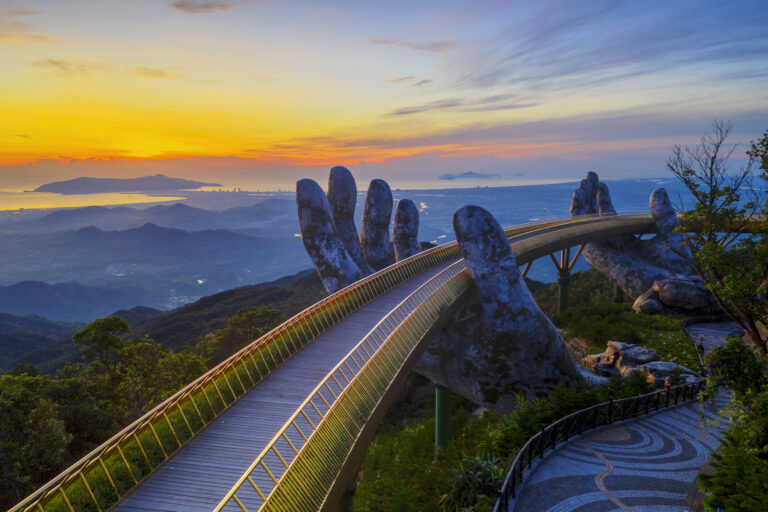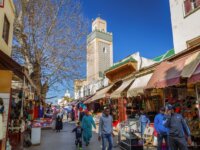SINGAPORE – Singapore Changi Airport, one of the most prominent aviation hubs globally, stands as a testament to cutting-edge infrastructure and unparalleled passenger services. Nestled on the eastern edge of the city-state, this airport has continually redefined the air travel experience, consistently winning accolades for its excellence.
Overview Singapore Changi Airport
Located 20 km northeast of the center of Singapore, Changi is the only airport on the island nation. Since its inauguration in 1981, Changi Airport has received over 650 awards and titles for being the Best Airport. In March, at The World’s Best Airports – an annual award ceremony known as the Oscars of the aviation industry – Changi Airport was once again recognized as the best airport in the world. Prior to 2021, Changi had held the top spot for 8 consecutive years.
Situated strategically, Singapore Changi Airport serves as a vital connecting point for international flights, linking continents and facilitating seamless travel. Its geographical location has contributed significantly to its status as a key hub for global air traffic, fostering economic growth and international collaboration.
The airport’s reputation is built on its state-of-the-art facilities, boasting an array of modern amenities that cater to the diverse needs of travelers. From luxurious lounges to world-class shopping and dining options, Changi Airport endeavors to create an environment that transcends the conventional expectations of an airport, offering an immersive and enjoyable experience for passengers.
Changi is not just an ordinary airport, it is a shopping, entertainment, and dining complex where tourists can visit and experience even without a flight.
Readmore: Singapore travel guide
Entering the scene.
Travelers are exempt from visa requirements when visiting Singapore, as long as they have a valid flight ticket and passport.
Three days before departure, travelers can submit their SG Arrival Card and complete the online health declaration through the free service on the Immigration & Checkpoints Authority (ICA) website.
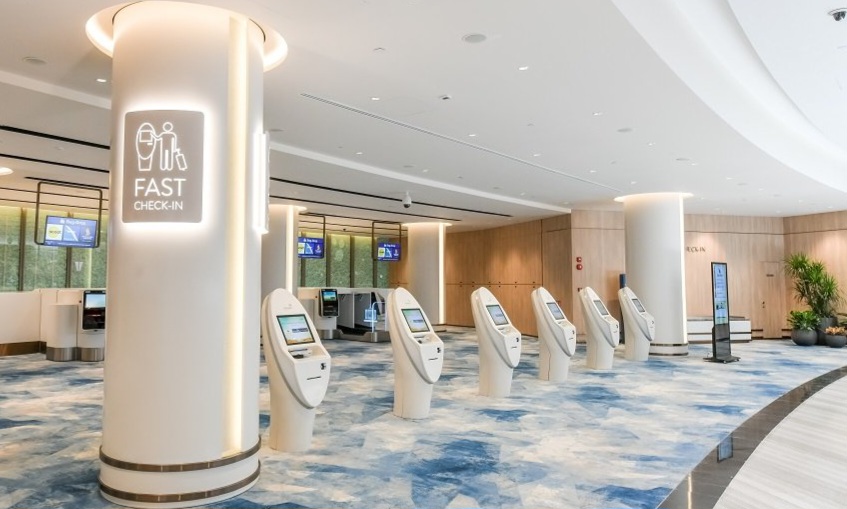
Early check-in area at Jewel.
At all four terminals of the airport, there are self-service immigration lanes. Instead of filling out the arrival card online through the ICA website, travelers can do it at the airport with the assistance of security personnel. After providing personal information, flight details, travel itinerary in Singapore, and health declaration, travelers will proceed to the self-service immigration lane. The machines will automatically scan the information on their passports, and then they only need to scan their fingerprints and facial recognition.
The immigration process is quick and efficient, taking only about 10-15 minutes, plus waiting time depending on the number of passengers. To save time, it is recommended for travelers to submit their arrival card online beforehand. Doing this at the airport may result in longer waiting times as each counter only has around 6 devices for travelers to fill in their information.
In addition to the self-service immigration lanes, Changi also has an early check-in area. Passengers can complete their check-in process 3 to 24 hours before their flight at the Jewel complex on the first floor.
Train stations.
The airport boasts four operational terminals, with T1 being the first to open its doors in 1981, followed by T2 in 1990, T3 in 2008, and T4 in 2017. The Jewel complex at the airport has been in operation since 2019.
Each terminal at Changi has its own unique design, offering a variety of attractions, shopping options, dining experiences, and entertainment for travelers to enjoy.
T1 Station.
This is the first terminal of Changi Airport. In 2019, T1 was upgraded to connect with the Jewel complex. After the renovation, both the departure and arrival halls were expanded to make it more convenient for passengers to move around. Travelers can fly with Scoot to reach T1 terminal.
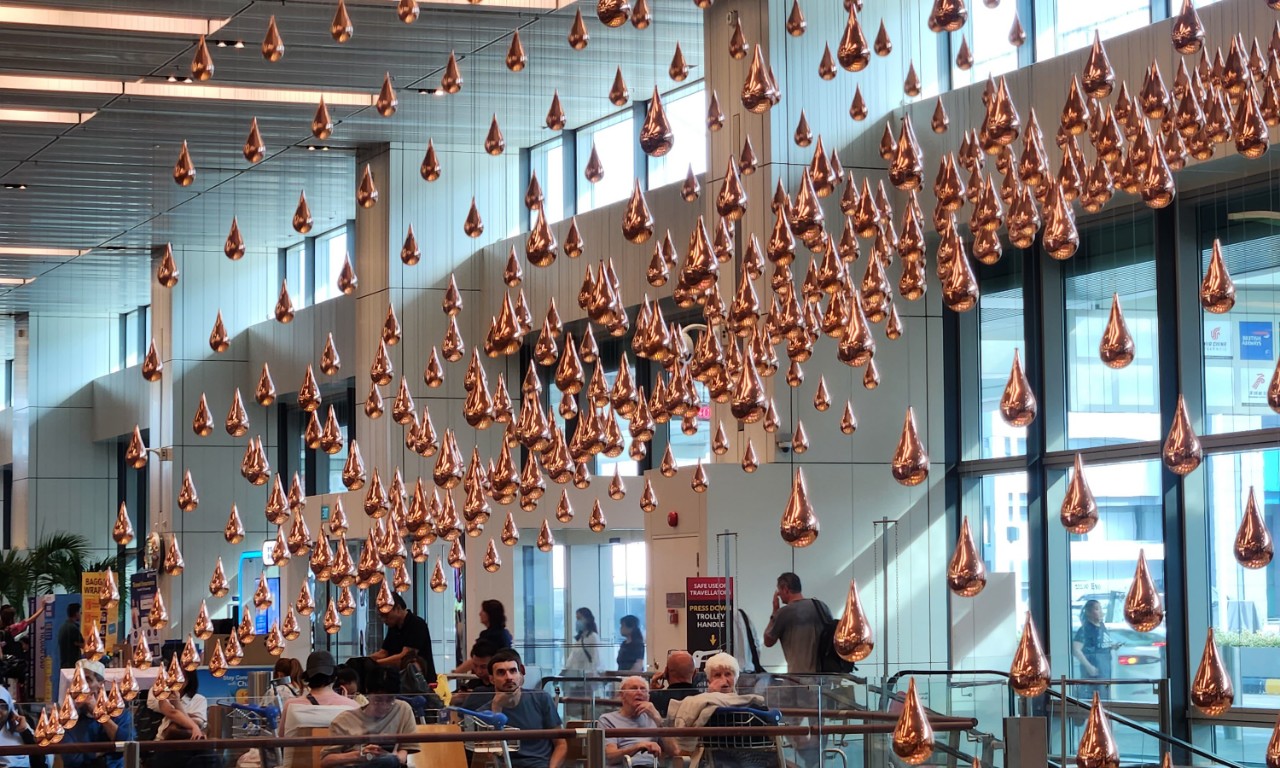
Sculptures crafted from bronze water droplets at Terminal 1.
At the departure hall of T1, visitors will be greeted by mesmerizing kinetic rain sculptures suspended in mid-air. This art installation, called Kinetic Rain, features 1,216 copper droplets that can transform into different shapes and patterns such as airplanes, hot air balloons, and kites.
The terminal also boasts a rooftop swimming pool with a view of the runway, making it a perfect spot for travelers to relax while waiting for their connecting flights.
Jewel Complex.
This area serves as the heart of Changi Airport, connecting Terminals 1, 2, and 3. Jewel serves as a bridge between Terminal 1 and can be accessed by travelers from Terminals 2 and 3 via a pedestrian walkway. Before its opening in 2019, Jewel was once just an old parking lot within the airport.
With 5 levels above ground and 5 levels below ground, Jewel covers a total floor area of 135,700 square meters. It is a complex with over 280 retail and dining outlets, as well as various attractions and accommodations right within the airport.
The Rain Vortex waterfall is the iconic centerpiece of Jewel, standing at 40 meters tall and located at the center of the complex. Jewel also boasts one of the largest indoor plant collections in Singapore, spanning 21,000 square meters and specially designed to enhance the overall landscape of the complex. Two winding nature trails weave through the gardens, reaching heights of 30 meters. Surrounding the 40-meter waterfall are 2,000 trees and palm species, along with over 100,000 shrubs.
The highest level of the complex features a 14,000 square meter park, complete with activities such as hedge and mirror mazes, glass bridges, and a suspended walking net for visitors to explore.
The highlight of this area is the Changi Experience Studio, resembling a technology museum that showcases the history and development of Changi Airport. The studio features over 20 interactive points in 10 zones, including interactive games, image projections, virtual reality shows, and exhibitions. Each interactive point tells a different part of the story of Changi Airport. Visitors are given RFID-enabled cards – virtual tour guides to navigate through the studio.
T2 Station.
The opening of Terminal 2 in 1990 marked a significant milestone for Changi Airport. Recently expanded by an additional 21,000 square meters, it reopened its doors in early November. This expansion has increased the airport’s capacity by 5 million passengers per year, bringing the total handling capacity to 90 million passengers annually. It is also the first terminal at Changi to feature automated assistance for disabled and young travelers in both arrival and departure areas. Travelers can book flights with Singapore Airlines to arrive at Terminal 2.
This terminal boasts a modern design inspired by nature. More than just a place for arrivals and departures, it offers many attractions for travelers to explore while waiting for their flights. These include the virtual waterfall The Wonderfall, the hanging garden Dreamscape, the photo spot with the mechanical flight board Flap Pix, and the Li Bai lounge for wine tasting.
In the transit area, there is a TV Lounge where passengers can take a break and relax on comfortable seats while watching the latest TV programs or sports events on a large LED screen. For families with young children, the 2 Bears Hideout play area is a perfect choice for keeping them entertained during the wait.
T3 Station.
The unique domed architecture of Terminal 3 allows natural light to flood the departure hall, while also shielding passengers from the tropical heat. It is the busiest terminal at Changi Airport.
One of the main attractions of this terminal is the Butterfly Garden located in the waiting lounges on levels 2 and 3. This is the first butterfly garden in the world to be found in an airport, housing over 1,000 tropical butterflies from more than 40 different species. The garden also features multiple breeding pillars for various types of butterflies.
Currently, T3 is the first terminal at Changi to be decorated for Christmas, with festive-themed activities and shopping experiences. Visitors can stop by the Candy Snow House on level 1 to experience the unusual sensation of -10 degrees Celsius in a tropical airport. Tickets for this attraction cost 18 Singapore dollars (13,51 USD) and allow visitors to stay for one hour. Before entering the snow house, visitors are provided with thermal jackets and gloves. This area will only be open until March 2024.
T4 Terminal.
This is the only terminal that is not directly connected to the Jewel complex. T4 is the smallest terminal out of the four at Changi, with a design inspired by the image of orchid petals. The symmetrical petal pattern can be found in various locations throughout the terminal, from the ceiling to the carpets.
One of the highlights at the center of T4 is the dynamic sculpture Petaclouds, spanning 200 meters and resembling clouds made of flower petals. The sculpture moves along to classical music composed by Icelandic musician Ólafur Arnalds.
The Heritage Zone at T4 is also a popular spot for tourists to check in. This area allows visitors to imagine the traditional colorful shophouses of the Peranakan people in Singapore. There is also a 6-minute short play called “Peranakan Love Story” projected on a digital stage created by two shophouse buildings.
The terminal also offers entertainment options such as the Chandelier Slide – a 16-meter high architectural structure and art installation that allows passengers to experience it for free before their flight.
Travel.
Skytrain (Overhead Electric Train).
The T1, T2, and T3 terminals are seamlessly connected by a complimentary skytrain in both the public area and transfer zone. The train operates from 4:30am to 1:30am, ensuring convenient transportation for travelers at all hours.
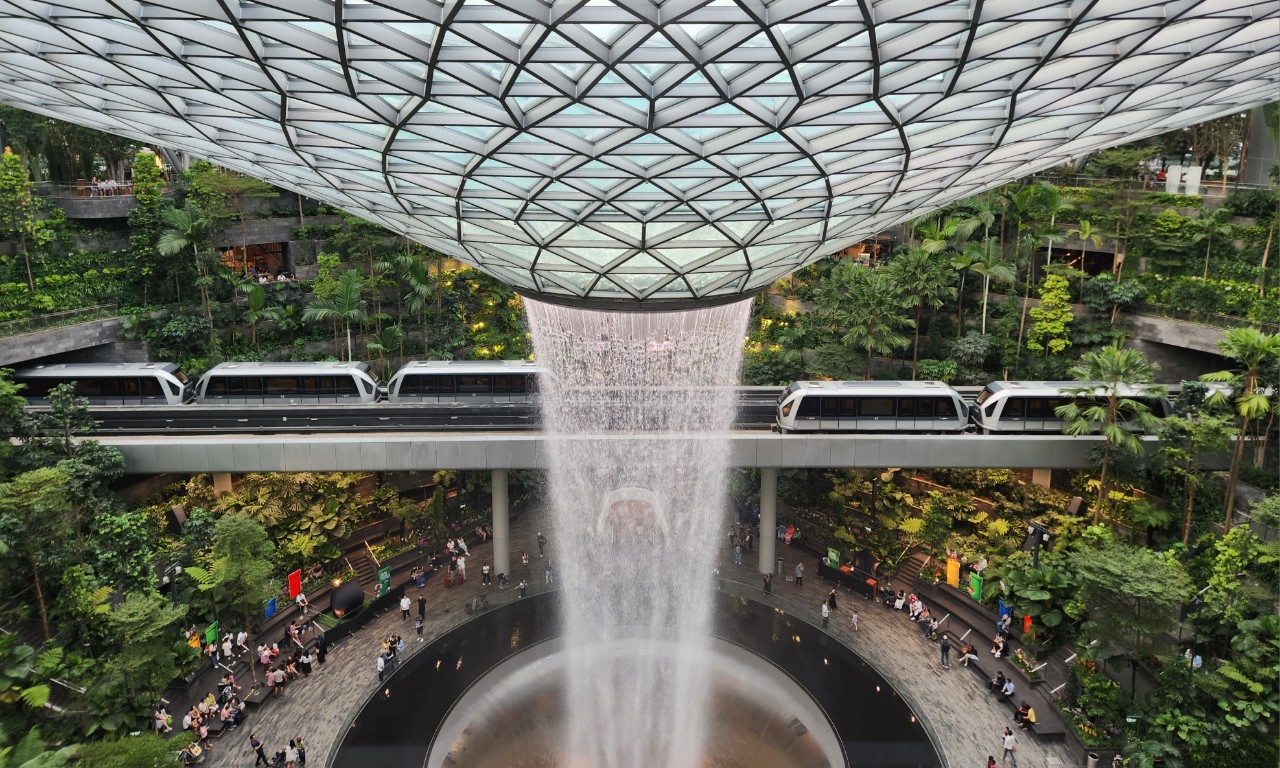
Sky train traversing across the waterfall at Jewel.
Pedestrian bridge.
Visitors can take a leisurely stroll across the connecting bridges between terminals T1, T2, and T3. There is also a suspended bridge between terminals T2 and T3, adding an extra layer of excitement to the journey.
Visit the Jewel complex.
The Jewel complex is situated between Terminal 2 and Terminal 3 and has direct access to Terminal 1. From the arrival hall on the first floor of Terminal 1, visitors can easily make their way to the North entrance of Jewel Changi.
For those arriving at Terminal 2, a leisurely 5-10 minute walk across the connecting bridge on the third floor will lead you to Jewel.
Similarly, from Terminal 3, a 5-10 minute stroll across the connecting bridge on the second floor – near the Crowne Plaza hotel – will bring you to the departure hall of Jewel.
However, for travelers arriving at Terminal 4, they will need to take a shuttle bus to Terminal 3 in order to reach Jewel as there is no direct connection between the two terminals. Once at Terminal 3, visitors can simply walk over to the Jewel complex.
Travel to T4 terminal.
This station is located separately from the other three stations. Passengers from T4 station can take advantage of the complimentary Airport Shuttle Bus to travel to T3 station, and then transfer to T1 and T2 stations following the instructions provided. The shuttle bus operates from 8am to 12pm and from 2pm to 6pm, with a frequency of one trip every 20 minutes.
Shopping and dining.
According to representatives from Changi airport, the majority of its revenue does not come from passenger operations, but rather from commercial activities. With over 550 dining, retail, and duty-free stores spread across 4 terminals and the iconic Jewel complex, shopping is a major highlight at Changi.
One standout shopping experience is Changi 1st, where major brands set up pop-up events to showcase their upcoming products from around the world. Additionally, Changi offers an online shopping service called Ishop Changi, where customers can make purchases through the app and have their items delivered to them by airport staff.
Another lesser-known service at Changi is the Shopping Concierge, where staff assist with personal shopping requests, provide directions, and offer guidance on all things related to shopping at the airport.
Shopping areas at train stations.
Visitors to Jewel can stop by the second floor, Duplex Boulevard, for some shopping. This area boasts 11 two-story shops, including popular brands like Apple Store and Shake Shack, that are always bustling with customers.
At the newly opened T2 terminal, one of the standout shopping spots is Lotte Duty Free Wines & Spirits, specializing in alcohol products. The space is divided into two levels, with the first floor featuring a bar area staffed by robots named Toni and the Makr Shakr. These are the world’s first robotic bartenders at an airport. The second floor is a tasting and display area where guests can choose from 18 types of whisky to sample. The ceiling of this area is a LED screen displaying images inspired by the garden of poet Li Bai.
The newly renovated B2 level at T3 terminal also focuses on brands found at Changi and retail stores that rotate their products every few months to provide a diverse shopping experience for visitors.
The integrated duty-free area at T4 terminal is also a hub for electronics, clothing, bags, and tea and pastries from mid-range to high-end brands.
Food and dining spots.
Travelers can indulge in dining in the garden on the 5th floor of Jewel. Surrounded by lush greenery and the sound of flowing water, this area is a peaceful oasis. Tanuki Raw and Burger & Lobster are two must-visit restaurants in this section.
At Terminal 2, passengers can visit Gourmet Garden to enjoy local and international cuisine while waiting for their flight. The restaurant stands out with its hanging garden, located right next to the glass wall overlooking the runway.
For those with flights at Terminal 3, Singapore Foodstreet on the 3rd floor of the transit area is a great stop. This spot recreates the food street scene of 1960s Singapore, with various food stalls serving local delicacies like Bak Kut Teh (pork rib soup), Hainanese chicken rice, and laksa (spicy noodle soup with seafood).
The Heritage Zone at Terminal 4 also offers dining options for both sit-down meals and packaged local specialties for souvenirs.
Accommodation.
The only airport in Singapore with a transit hotel system that offers services like a regular accommodation is the YOTELAIR. Located at the Jewel complex, it is Asia’s first hotel of its kind where travelers can book a stay for up to 4 hours. Passengers transiting through Terminal 1 can rest at the Aerotel hotel, while those at Terminal 3 can reserve a room at the Crowne Plaza hotel.

